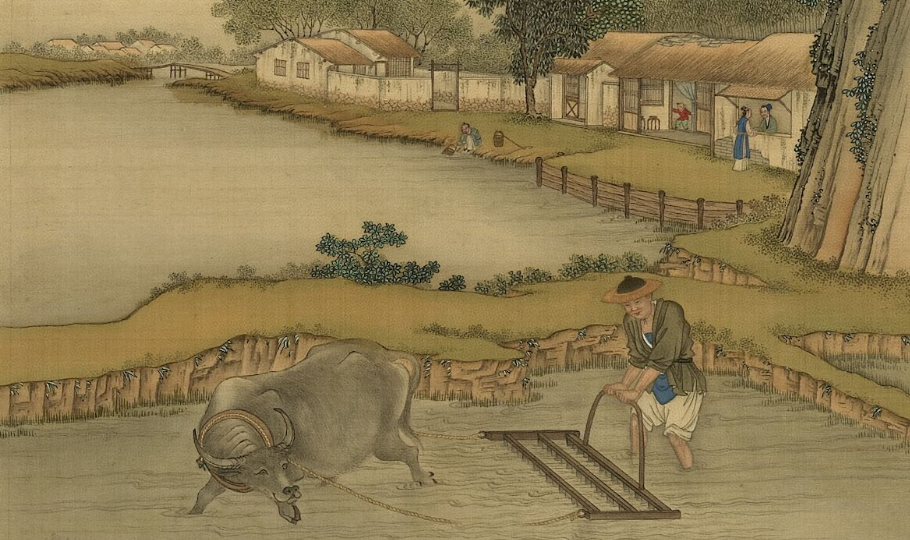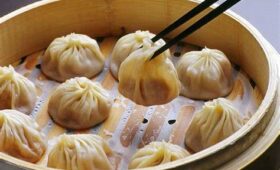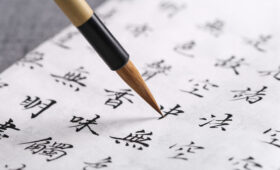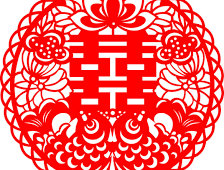Traditional Chinese painting involves essentially the same techniques as calligraphy
and is done with a brush dipped in black or colored ink,typically on paper or silk.
The finished work is then mounted on scrolls, which can be hung or rolled up.
Traditional painting also is done in albums and on walls, lacquerwork, and other media.
Chinese painting and calligraphy are judged by the same criteria,
the vitality and expressiveness of the brushstrokes and the harmony of the composition.
There are two main techniques in Chinese painting
Meticulous – Gong-bi,often referred to as “court-style” painting,or “fine-line” painting.
This style of painting incorporates delicate Chinese calligraphy strokes and close attention to detail.
Fine brushes are first used to create an outline of the subject, a
nd then the artist goes back with softer brushes to apply layers of color washes until the desired effect is achieved.
Freehand – Shui-mo loosely termed “watercolor” or “brush” painting.
The Chinese character “mo” means ink and “shui” means water.
This style is also referred to as “xie yi” or freehand style.
This style emphasizes the interpretive aspect of brushwork and the shading of ink,
and seeks to express the essence of the subject, rather than the details of its appearance.
Only black ink and its shadings are used. Xie yi style has a freer,unrestrained look.
The two styles are often combined in varying degrees.
A third style, xi hua is a fusion of Chinese and Western painting techniques,
incorporating elements of impressionism and Western perspective.
The materials used in Chinese painting
Brush and ink on paper and silk,have determined its character and development over thousands of years.
It is essentially a linear art, employing brushwork to evoke images and feelings.
The aesthetics of painting and calligraphy have significantly influenced the other arts in China.
The flowing lines and linear motifs that decorate Chinese ritual bronzes, Buddhist sculptures,
lacquer ware, porcelain, and cloisonné enamel are derived from the rhythmic brushstrokes of ink painting.
Once on paper,brushstrokes cannot be erased or corrected,
so a painter must have a complete mental concept of the painting before even lifting the brush.
Chinese painting is closely related to Zen Buddhist
and Daoist ideals of total concentration in the act of the moment and harmony between man and his environment.
The painter must work with speed, confidence, and technical mastery, infusing spiritual energy into the brushstrokes.
Painters practice stereotyped brushstrokes
for painting leaves, grasses, trees, flower petals, bamboo, mountains, rocks, fish, water, boats and any number of individual elements.
Once the painter has mastered these techniques,
he can transcend technicality and freely express his genius in his own personal style.
This event, when an artist breaks free from mere technique and conveys his living genius into the brushstrokes on paper,
is called “flight of the dragon.
Painters
Traditional Chinese painting do not attempt to capture the actual physical appearance of a subject, but rather its essential character or quality. Landscape painters,for example, frequently go out and observe nature,
then come back to a studio to paint what they have experienced.
Many landscapes incorporate empty spaces to suggest light or clouds.
A flower may be surrounded by blank paper,or paired with a bird or another flower that exists in a different season or climate.
Certain details might be rendered with great care, to emphasize an aspect of the subject matter,
while others are left to the imagination. Bold strokes contrast with soft, barely washed areas.
Chinese paintings do not have a single perspective or view point; every area of the painting is interesting to the eye.
Landscapes are often painted from a viewpoint above the scene, so that many areas can be seen at once.
In large scenes or landscapes, the eye is meant to travel along a visual path from one area to another.
Paintings on scrolls are made to be “read” from one end to the other,and the portions not being viewed can be rolled up.
Chinese painters frequently copy the works of previous masters.
Copying is regarded as a form of spiritual and artistic self-discipline,
and accurate copies are admired almost as much as the originals.
Many ancient paintings are no longer extant but have been preserved through copies that were made centuries later.
History
Development to 221 B.C.E.
Traditional Chinese painting is one of the oldest continuous artistic traditions in the world,
originating around 4000 B.C.E. and developing over a period of more than six thousand years.
In its seminal stages, Chinese painting was closely associated with other crafts such as pottery,
jade carving, lacquer ware and bronze casting. The earliest paintings were ornamental,
not representational, consisting of patterns or designs rather than pictures.
Stone Age pottery was painted with spirals, zigzags, dots, or animals.
During the Warring States Period (403-221 B.C.E.), artists began to represent the world around them.
Much of what we know of early Chinese figure painting comes from burial sites,
where paintings were preserved on silk banners, lacquered objects, and tomb walls.
Many early tomb paintings were meant to protect the dead or help their souls get to paradise.
Others illustrated the teachings of the Chinese philosopher Confucius or showed scenes of daily life.
The earliest surviving examples of Chinese painting are fragments of painting on silk,
paintings on stone, and painted lacquer items dated to the Warring States period (481 – 221 B.C.E.).
Painting from this era can be seen on an artistically elaborate lacquer coffin from the Baoshan Tomb (fourth century B.C.E.)
An early painting on silk from the Western Han Dynasty was found along with exquisitely decorated funerary items in a tomb at Mawangdui, Changsha, Hunan, China.




